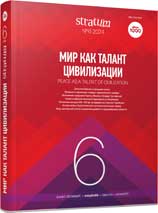Одонтологическая характеристика средневековых ингушей (по материалам склепа Цори)
Nonmetric Dental Traits in the Medieval Ingush Population (Based on Materials from the Tsori Crypt)
Author(s): Natalia A. Leibova, Umalat B. GadievSubject(s): History, Archaeology, Middle Ages, Demography and human biology
Published by: Издательский дом Stratum, Университет «Высшая антропологическая школа»
Keywords: biological anthropology; dental anthropology; Caucasus; Ingush; Vainakhs; Tsori Crypt
Summary/Abstract: The presented paleoanthropological data became available in 2022 due to the destruction of one of the ground crypts in the Tsori tower ensamble, located in the southeastern part of Mountainous Ingushetia. The artifacts discovered in the crypt date back to the 17th—18th centuries and are associated with the ethnic culture of the Ingush people. The analysis of the remains from Tsori was conducted as part of a project focused on craniometric and dental anthropology studies of the crypts in Mountainous Ingushetia. The overall dental sample includes materials from ten crypts dating from the 15th to the 18th centuries: Targim, Egikal, Tsori, Solgi, Muzhgan, Kak, Kerbi, Sredny Ozdik, Yurteta, and Bisht. A total of at least 62 individuals were examined within the dental anthropology study framework. The data from Tsori represents the first comprehensive series from a single crypt, providing a unique opportunity to explore the local diversity of dental nonmetric traits among the medieval population of Mountainous Ingushetia. The dental traits found in the Tsori sample, along with the data from the other crypts, exhibit characteristics of an archaic layer, which can be traced back to the Late Bronze Age populations in the South Caucasus region. The medieval Ingushes stand alone among the majority of the contemporary populations in the Caucasus.
Journal: Stratum plus. Археология и культурная антропология
- Issue Year: 2024
- Issue No: 6
- Page Range: 231-241
- Page Count: 11
- Language: Russian
- Content File-PDF

